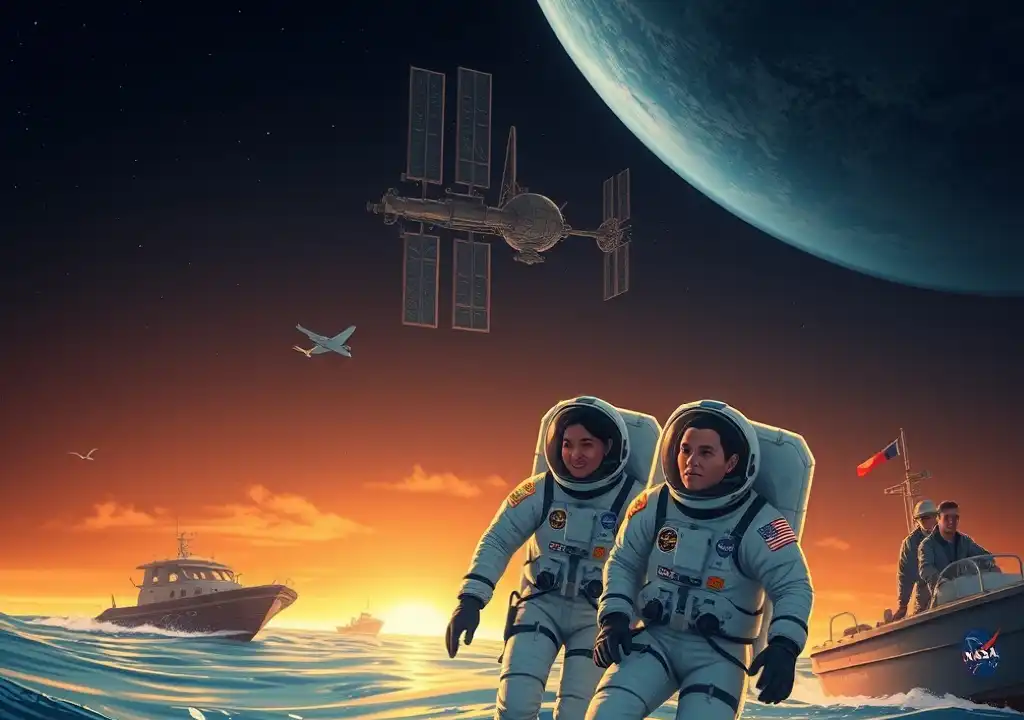Two NASA astronauts, Sunita Williams and Butch Wilmore, have safely returned to Earth after a prolonged stay in space lasting nearly nine months. The duo was stranded aboard the International Space Station (ISS) due to a malfunction with Boeing’s Starliner spacecraft.
The astronauts, who had originally been scheduled to return home much sooner, began their journey back on Tuesday morning, undocking from the ISS at 1:05 am ET. After a 17-hour journey, they splashed down off the coast of Florida at 5:58 pm ET. Their return was livestreamed by NASA, offering the public a glimpse into their long-awaited homecoming.
The Astronauts: Who Are They?
Williams, 59, and Wilmore, 62, are seasoned NASA astronauts with extensive spaceflight experience. Williams, a retired Navy officer, has spent a total of 322 days in space and has participated in nine spacewalks. Wilmore, who first flew in 2009, has logged 178 days in space and has served as a flight engineer and commander in various missions.
For this mission, Wilmore served as the commander, while Williams was the pilot. They had been expected to return on Boeing’s CST-100 Starliner spacecraft after their mission to the ISS, but issues with the spacecraft delayed their departure.
Why Did They Get Stuck in Space?
The astronauts’ extended stay occurred due to technical difficulties with Boeing’s Starliner, the spacecraft designed to bring them home. Starliner had suffered multiple malfunctions during its journey to the ISS, including thruster issues and a helium leak. Although engineers managed to restore some functionality, NASA decided the spacecraft was unsafe for the return journey, leaving Williams and Wilmore stranded.
NASA then decided to bring them back aboard SpaceX’s Crew Dragon capsule. The Crew Dragon had been docked at the ISS since September 2024, and a changeover of astronauts, known as Crew-10, finally allowed them to depart.
How Long Were They Stranded in Space?
Williams and Wilmore had been in space since June 5, 2024, spending over nine months in orbit, far exceeding their planned stay of just eight days. The typical rotation for astronauts aboard the ISS is about six months, but their mission was extended due to the spacecraft’s failure.
Surviving in Space for So Long
During their extended mission, both astronauts remained healthy, keeping up with daily exercise routines to preserve their physical health. They also participated in various research projects, including a spacewalk in January. Regular resupply missions ensured they had food, water, and oxygen, while they kept in touch with their families through email and phone.
Despite the prolonged stay, Williams and Wilmore expressed optimism. In an interview, Williams assured people not to worry about them, saying, “We’re a happy crew up here.”
Historical Precedent for Extended Space Stays
Williams and Wilmore are not the first astronauts to experience an extended stay in space. The longest space mission by a US astronaut was Frank Rubio’s 371-day stay aboard the ISS, extended due to issues with the Soyuz spacecraft. Another notable case was Soviet astronaut Sergei Krikalev, who was stranded aboard the Mir space station for 311 days due to political unrest during the collapse of the Soviet Union.
Conclusion
The return of Williams and Wilmore marks the end of an unexpected and lengthy stay aboard the ISS. Their resilience and continued dedication to their mission serve as a testament to the adaptability and determination of astronauts in the face of unforeseen challenges.

